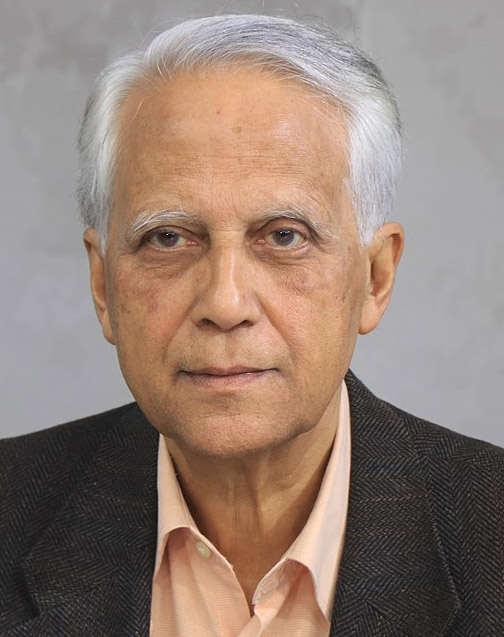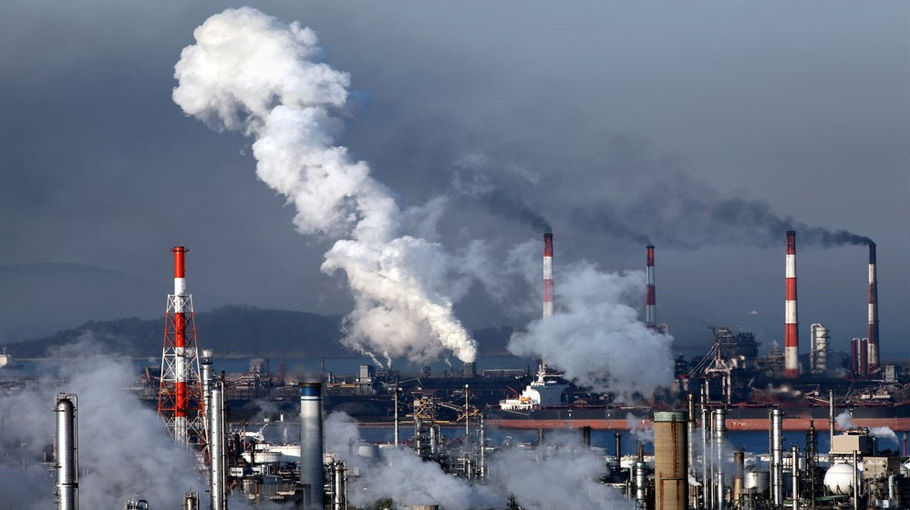Energy security, climate change and environmental degradation

The early 1900s was an age of coal and iron. Industry was noisy and filthy, spewing the smoke from burning coal far and wide. In Philadelphia, one of the hives of industry on the Eastern Seaboard of the US, things had already become intolerable. In 1904, some 50 years before the country's Air Pollution Act of 1955, the city's administrators initiated measures to ensure cleaner air. Into this world came an American inventor with a simple plan – to harness the heat of the Sun so it could be used to power machinery. It has taken more than a century for ideas like his to achieve critical mass, but we could now be at a turning point.
On 18 April, 2023 the G7 Foreign Ministers’ Conference held in Japan and participated by the G7 Foreign Ministers of Canada, France, Germany, Italy, Japan, the United Kingdom (U.K.) and the United States of America (U.S.), and the High Representative of the European Union, underlined in their Communique their strong sense of unity as the world navigates grave threats to the international system. The statement issued at the conclusion of the meeting included several areas of concern that are currently affecting the world. There was also reiteration of their commitment for collective action to address global challenges, including climate change, pollution, loss of biodiversity, health, and food and energy security, and to uphold and reinforce the free and open international order based on the rule of law, respecting the United Nations (UN) Charter.
They also reaffirmed that they will continue to work with their partners to promote open, transparent, resilient, and sustainable societies that champion human rights, justice, and dignity, and address the needs of the most vulnerable.
Their intention was also underlined regarding the possibility of promoting human security and continuing to build a global community that leaves no one behind. They also called on all partners to join them in addressing these pressing global challenges and to work together to build a better, more prosperous and more secure future.
In this context recognition was particularly given to the possibility of achieving energy security and simultaneously accelerating the transformation towards net zero greenhouse gas (GHG) emissions by 2050 and halting and reversing biodiversity loss by 2030 urgently.
To that end, the important G7 participants reaffirmed their “determination to reduce energy consumption, promote energy efficiency, and fast-track clean, safe, and sustainable energy development and deployment, while reducing our dependence on fossil fuels”. This step was suggested in order to speed the decarburization of global energy systems. They also endorsed their “determination to strengthen global energy governance and to ensure liquidity of energy markets through ways such as increased usage of clean energy, in order to prevent any country from leveraging energy exports as a tool of geopolitical coercion”.
We have to wait and see how the
renewable energy timeline evolves
among G7 countries and also in
South Asia-particularly Bangladesh-
one of the most densely populated
countries in the world
What drew the appreciation of the world was their agreement to “work to strengthen secure, resilient, sustainable, responsible, transparent, and diverse critical minerals supply chains essential for net zero economies and clean technologies, and diversify wider clean energy supply chains to support the global energy transition”.
Analysts and environmentalists in this context recalled that such a pledge towards the goal of achieving fully or predominantly decarbonized power sectors by 2035 would definitely assist in the achieving and ensuring access to affordable, reliable, and sustainable energy for all. This has led institutions related with climate change to promise fostering full international collaboration to accelerate clean and sustainable energy transitions to keep a temperature limit of 1.5°C within reach. In this regard one must not also forget that there is great significance related to objective data and analysis as well as dialogue among stakeholders with a view to stabilizing energy markets.
The G7 Communique also correctly referred to another important dimension. Attention was also drawn concerning the accelerating impacts of the triple global crisis of climate change, biodiversity loss, and pollution. Discussion on this issue in the meeting had also referred to the findings of the Intergovernmental Panel on Climate Change. Consequently, the meeting reaffirmed their “unwavering commitment to strengthening the implementation of the Paris Agreement and Kunming-Montreal Global Biodiversity Framework (KMGBF) in this critical decade, and working towards a successful United Nations Framework Convention on Climate Change COP28”.
The participants of the G7 meeting also welcomed not only “the conclusion of the negotiations for an international and legally binding instrument under the UNCLOS on the conservation and sustainable use of marine biological diversity of areas beyond national jurisdiction (BBNJ)” but also called on “all actors to take scaled-up, immediate, ambitious, and inclusive actions to ensure that their climate commitments are aligned with a 1.5 °C pathway to achieve global net-zero GHG emissions by 2050 at the latest”.
Analysts monitoring the meeting subsequently observed that if such a consolidated course of action was undertaken by important developed countries with an industrialized base and infrastructure then the world would not be surprised if during COP28 agreement is reached to collectively peaking global GHG emissions as soon as possible by 2025 at the latest, revisiting and strengthening the 2030 targets in their Nationally Determined Contributions (NDCs) as necessary.
The financial factor associated with such hopes also received required attention. The G7 participants reaffirmed their commitment to the developed country's goal of jointly mobilizing 100 billion US Dollars annually in climate finance through 2025 in the context of meaningful mitigation actions and transparency on implementation.
However there was less clear emphasis on financial assistance pertaining to adaptation prospects. One may note that the Communique did mention that the G7 would “continue accelerating our efforts to at least double the collective provision of climate finance for adaptation to developing countries from 2019 levels by 2025, and call on others to do the same”.
The G7 has reiterated that they will “promote the empowerment and protection of groups that may be more adversely affected by climate change. We will continue to provide further support to advance adaptation and strengthen the resilience of those people and to take timely and effective actions to reduce risks posed to peace and stability by climate change and environmental degradation.
Nevertheless analysts and environmentalists did not get any clear message in terms of number as was stated pertaining to mitigation. One can only hope that this will be clarified soon.
It needs to be underlined here that the discussion in the meeting fortunately also reiterated and importantly reaffirmed not only “the need for robust G7 pledges and the broadening of the contributor base for the Green Climate Fund’s ambitious second replenishment process” but also “commitment to aligning financial flows with the Paris Agreement and the KMGBF”.
Participants have also called on other countries and MDBs to do the same. It has been observed that there is “importance of Just Energy Transition Partnerships (JETPs)” and the G7 welcomes progress achieved on the JETP with South Africa, Indonesia and Vietnam, and the ongoing discussions with India and Senegal.
The G7 communique has recognized “ the particular concerns of many countries, including the member countries of the Pacific Island Forum and AOSIS, with respect to the stability of their baselines and maritime zones in the face of sea level rise. We emphasize the strong determination to work to successfully implement the decision at COP 27/the Paris Agreement-CMA4 to establish new funding arrangements for responding to loss and damage. We reaffirm the urgent need to halt and reverse biodiversity loss by 2030.”
However there was no clear reference to Bangladesh and the vulnerability millions of its citizens are facing due to rising sea water level that is already casting a shadow on the socio-economic dimensions of the population living on the Bay of Bengal coastline.
It needs to be remembered by developed countries that protecting people living in climate vulnerable situations, including those in SIDS, Least Developed Countries (LDCs), and fragile states, is essential for human security and sustaining stability. The mode and selection of help destinations and financial support should also be based on impartial calculations.
The emphasis on the gradual measures being undertaken by some countries to reduce the impact of climate change has already been seen through Germany.
It is interesting to note here that Germany has taken steps already to switch off its last three nuclear reactors, exiting atomic power even as it seeks to wean itself off fossil fuels and manage an energy crisis caused by the war in Ukraine.
While many Western countries are upping their investments in atomic energy to reduce their emissions, Germany is bringing an early end to its nuclear age. It may be recalled here that Germany pledged to quit nuclear power definitively after Japan’s 2011 Fukushima disaster sent radiation spewing into the air and terrifying the world. Initially planned for the end of 2022, Germany’s nuclear exit had already been pushed back once.
As Russian gas supplies dwindled last year, officials in Berlin were left scrambling to find a way to keep the lights on, with a short extension agreed until mid-April.
Nevertheless, the switching off of the nuclear dynamics has reiterated the significant achievement of Germany regarding shifting away from fossil fuels. German analysts and environmentalists have been pointing out for the last five years that a large proportion of Germany’s energy needs have been met by renewables. In 2014, the share of this contribution had 9.3% but now it has reached 27.4 %.
We have to wait and see how the renewable energy timeline evolves among G7 countries and also in South Asia- particularly Bangladesh- one of the most densely populated countries in the world.
Muhammad Zamir, a former Ambassador, is an analyst specialized in foreign affairs, right to information and good governance


